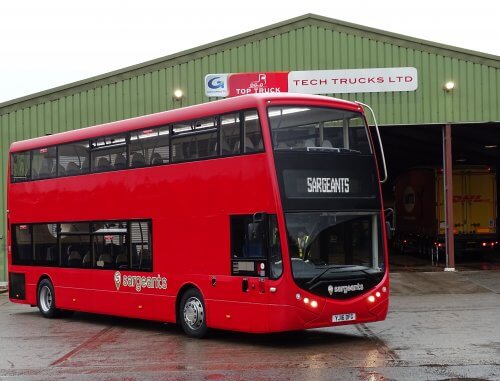 Optare, or Switch Mobility as it is now known, has been doing well with the MetroDecker EV, but it also has a diesel option. Richard Sharman looks at the Mercedes-Benz-powered diesel variant to see what it has to offer operators
Optare, or Switch Mobility as it is now known, has been doing well with the MetroDecker EV, but it also has a diesel option. Richard Sharman looks at the Mercedes-Benz-powered diesel variant to see what it has to offer operators
It has been just over a year since I took Metroline’s MetroDecker EV OME2680 for a test drive around Yorkshire. The result of that test drive was that the MetroDecker in electric form was a good product that had huge potential in the market. In the last year First Bus has taken delivery of 20 MetroDecker EVs, which have been successfully and silently running around York.
A Spectra for the 21st century?
The first double-decker bus to be built by Optare since the success of the DAF-engined Spectra is the MetroDecker. Body number OE340003 was the very first example fully built and made its debut outside the London Transport Museum in May 2014, originally carrying a dark blue demonstrator livery. After two years of testing with a diesel engine it was converted to an EV (Electric Vehicle) by Magtec. The beauty of the MetroDecker’s design, like other Switch Mobility products, is that the engine is on a cradle and can easily be removed for changing or upgrading.
[…]
By subscribing you will benefit from:
- Operator & Supplier Profiles
- Face-to-Face Interviews
- Latest News
- Test Drives and Reviews
- Legal Updates
- Route Focus
- Industry Insider Opinions
- Passenger Perspective
- Vehicle Launches
- and much more!


